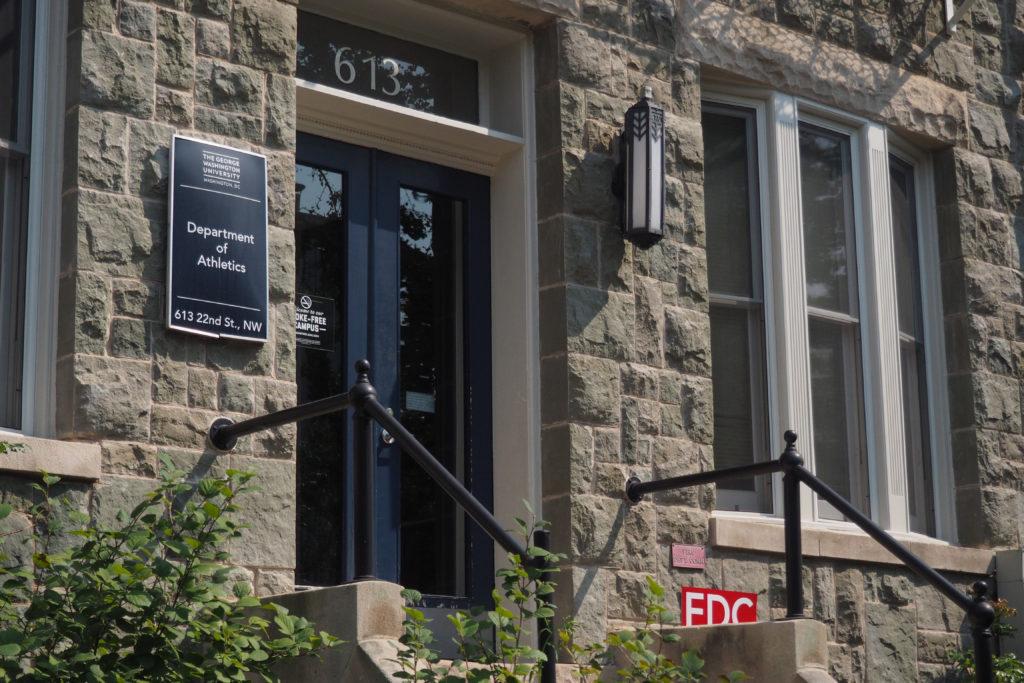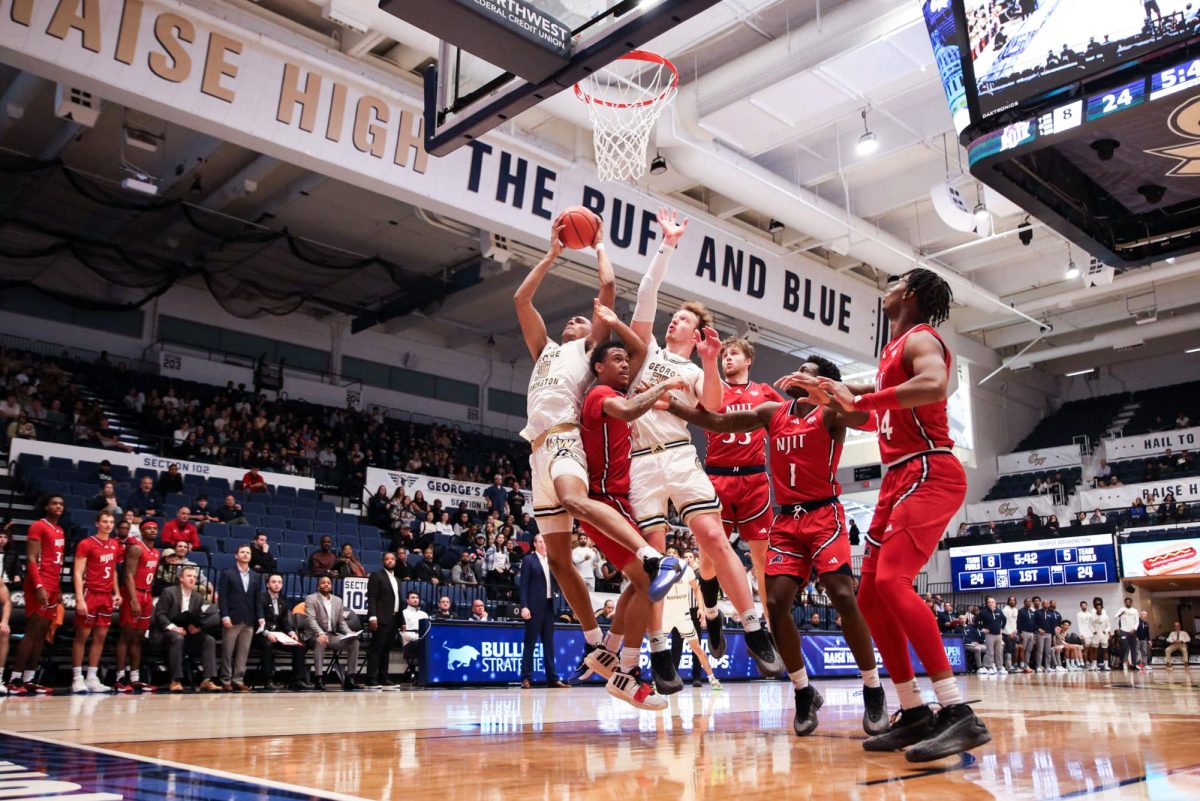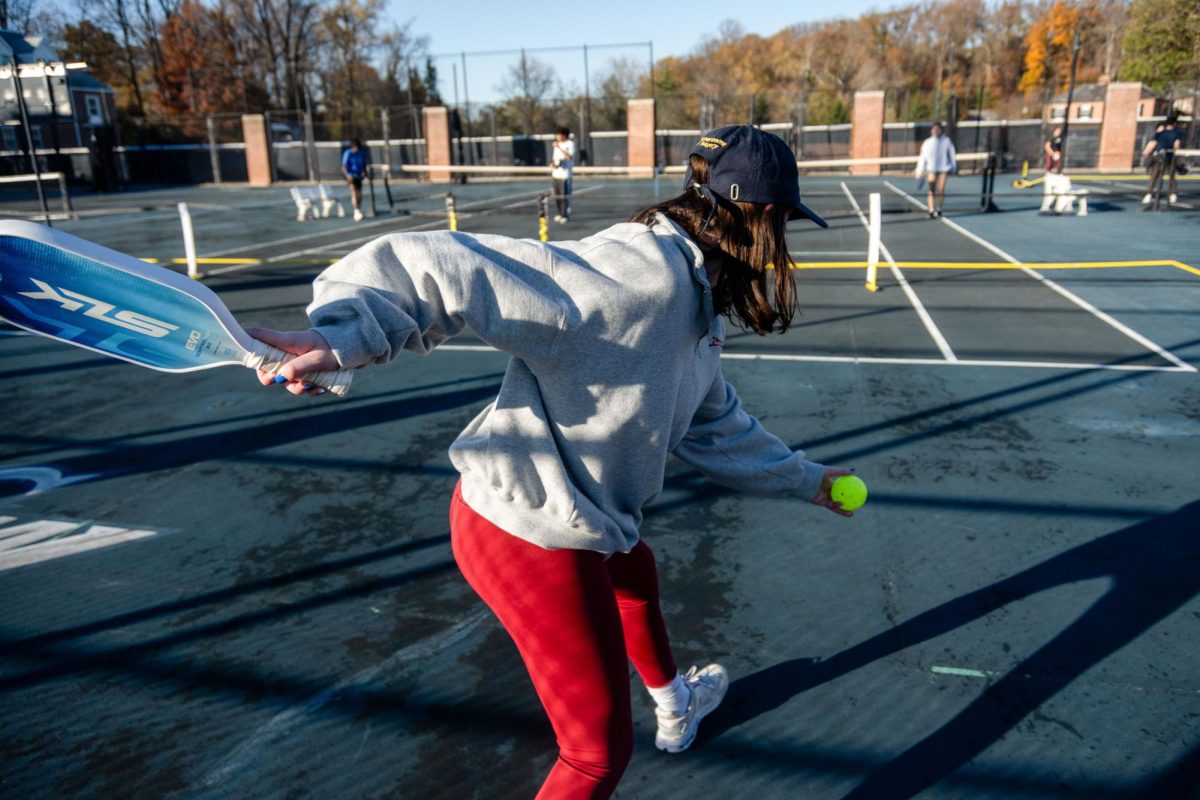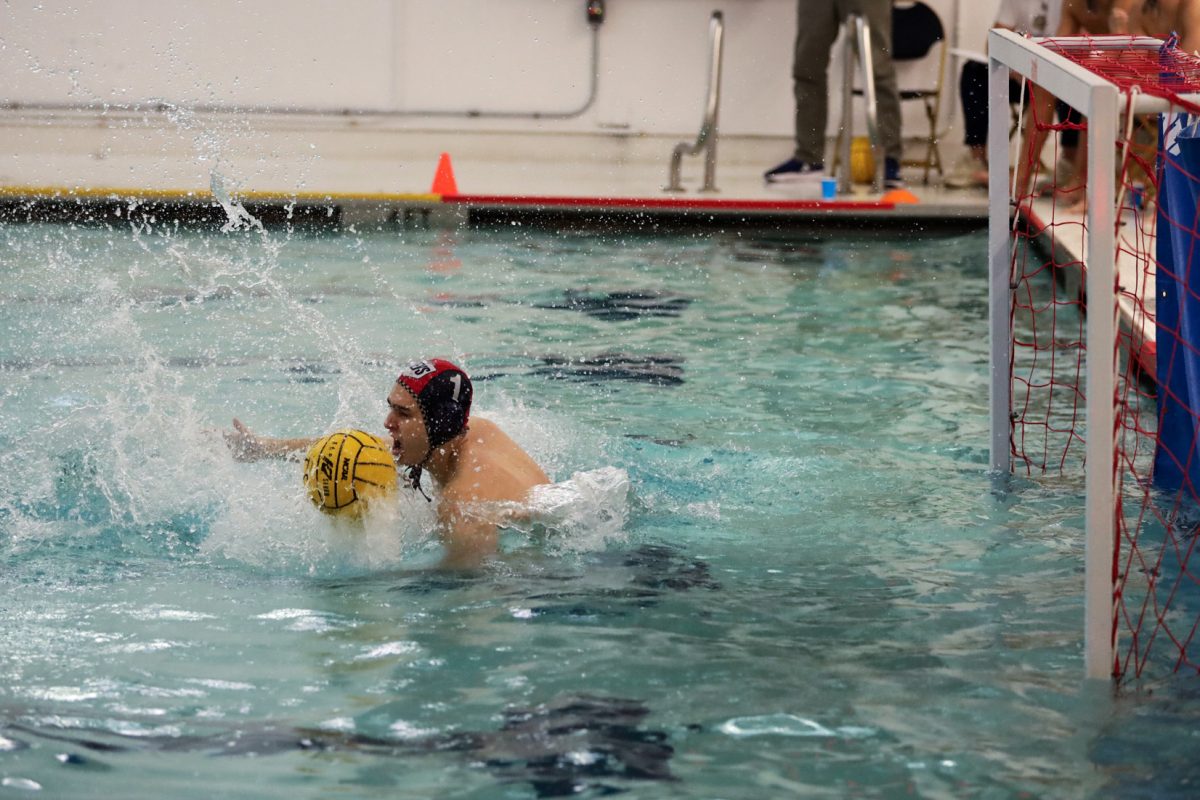With the fifth-largest 2020-21 budget in the Atlantic 10 with $27 million allocated to the Athletic Department in the 2020-21 fiscal year, GW saw a $123,000 increase of the disparity of its funds between the salaries in men’s and women’s programs, according to the Equity in Athletics Data Analysis, a U.S. Department of Education database released November.
There was a $4 million decrease in the Athletic Departments’ budget from 2019 to 2021 with the 2019-20 fiscal year facing a $281,327 decrease as the COVID-19 pandemic affected collegiate sports leading to the removal of seven programs due to budget cuts. GW’s Athletic Department had a budget deficit of $7 million as they were only able to garner $20 million in revenue during the pandemic.
In early August 2020, the Athletic Department announced the removal of seven programs at the conclusion of the 2020-21 season due to “growing financial concerns” brought by the pandemic. Men’s rowing, sailing, men’s and women’s squash, men’s indoor track, men’s tennis and women’s water polo were eliminated, cutting 118 student-athletes.
The department claimed the move came due to a gap between revenue and expenses that neared “at least $200 million” during the fiscal year for the University.
GW’s recruiting budget faced a $63,861 decrease from the 2018-19 to 2019-20 fiscal year and a $281,327 decrease from the 2019-20 and 2020-21 fiscal year, marking a decline within the recruiting budget in the past two fiscal years. In the 2020-21 fiscal year, GW’s recruiting budget for men’s and women’s athletics totals $69,943, outpacing other D.C.-area schools like Georgetown, Howard and American universities who spent $58,859, $27,000 and $27,065, respectively.
GW also held a strong lead compared to other D.C. schools in student aid or scholarships for female athletes, distributing $6,939,316, more than $2 million more than the next D.C. schools like American, Georgetown and Howard. Male athletes had five million dollars distributed to their financial aid, marking a $1,928,672 difference between financial aid given to male and female athletes.
The department’s men’s total operating expenses were $649,518 compared to women’s operating expenses of $571,353, marking an $1,590,641 decrease from the 2019-20 fiscal year.
Basketball was GW’s most expensive sport with $428,232 in operating expenses allocated for the year, making up more than a third of the total athletic budget.
Here’s a breakdown of 2020-21 fiscal year coaching salaries, recruiting expenses, student-athlete aid and overall athletic budgets at GW and across the A-10.
GW’s recruiting budget between men’s and women’s teams was more equitable than its A-10 peers, with only a difference of $78,183. The budget totals a spending average of $649,518 for the men’s teams and about $571,335 for women’s teams. These expenses include transportation, lodging and meals for prospective recruits, according to the NCAA.
GW’s most profitable and highest-funded team was men’s basketball, which generated $3,302,485 in revenue on a total game-day operating budget of about $428,232. Women’s basketball followed behind with about $2,919,494 in revenue on about the same $428,232 game-day operating budget.
Of the 449 student-athletes rostered across GW’s 18 teams, 54 percent are female and 45 percent are male. Women’s teams received a total operating budget of $1,019,199 compared to men’s teams’ $826,830. Female student-athletes were allocated $6,939,316 in aid, while male student-athletes received $5,010,644.
In 2018 when Athletic Director Tanya Voguel took her current position, she said she intended to spread financial resources to all teams.
The average pay gap between men’s and women’s teams head coaching salaries across the A-10 was $123,000, but GW’s average gap stood at $41,073, an increase from the $8,000 gap reported in the 2018-19 budget.
Athletic Department spokesperson Brian Sereno declined to comment.





